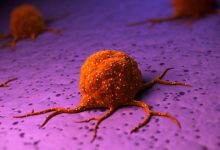
Whats new?
A researcher from the University of Virginia School of Medicine with his innovative approach has developed a “two-fisted antibody” to kill ovarian cancer. This new step with some modification can also help to destruct tumor in breast, prostate and other solid tumors.
Ovarian cancer is the cancerous growth in the ovary and is the fifth most common cause of cancer deaths in women. Ovarian cancer is the deadliest gynecological disease and the main focus of this study was to overcome the obstacles faced during other failed therapies and promising immune therapies.
“There are a lot of efforts in terms of cancer immune therapy, but the success of these are really limited in solid tumors,” said Tushir-Singh, of UVA’s Department of Biochemistry and Molecular Genetics and the UVA Cancer Center.
“I strongly believe, and with my own experience while working in the pharmaceutical industry, that this advancement will allow us to rescue and give a second lease on life to a lot of antibodies that have failed in the clinic. This is all based on a large amount of clinical data, and we have strategically exploited this information to improve the therapeutic efficacy of ovarian cancer.” added Dr. Tushir.
The concept of the study
The major problem researchers faced during this research is that the immune cells which kill the cancer cells were unable to penetrate the solid tumor bed effectively. This was due to the microenvironment of the solid tumor. The tumor microenvironment is made up of large receptors which form a fence around the tumor.
So the next step of researchers is to make an environment of tumor attractive for an immune cell. So that antibodies can invade the tumor.
A building of two Headed Arrow Antibody
For that researcher engineered antibodies with 2 headed arrow. First, they designed one head in a way that it can bind to a receptor expressed highly in ovarian tumors. The result: One head of the “arrow” strikes what is known as the “death receptor” on the cancer cells, telling them to die, while the other head strikes a receptor known as FOLR1, a well-established marker that suggests a poor prognosis among ovarian cancers.
His lab work suggests that antibodies engineered are more than 100 times more effective at killing cancer cells than the antibodies that have made it to clinical trials. Moreover, his approach avoids toxicity issues that have plagued previous antibody therapies, he said. “Liver toxicity has been the biggest problem for a lot of antibodies – they are taken out of the blood too fast and accumulate where not needed,” he said. “But by providing a good home for the antibodies in the tumor, we are keeping these antibodies away from the liver.”
Next Step
Tushir-Singh’s approach is still in the early stages of therapeutic development, but he is eager to test his two-headed arrow in people. He says his progress will depend on how quickly he can obtain funding for additional testing and for an investigational new drug (IND) filing with the federal government. “Ultimately,” he said, “a clinical trial in ovarian cancer patients is my big goal, and, with the help of the UVA Licensing & Ventures Group, we are looking for industrial partners too.”






